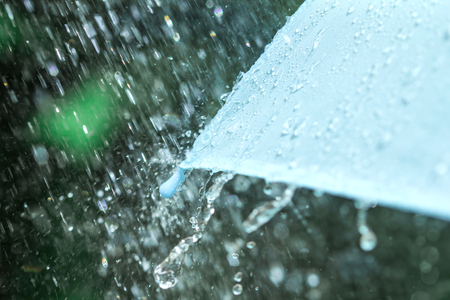It’s “misleading” to blame Hurricane Harvey’s record rainfall, or hurricane rainfall in general, on man-made global warming, according to a National Oceanic and Atmospheric Administration (NOAA) scientist.
“Linking hurricane rainfall to global warming today (and even decades from now) based upon such a tiny contribution is misleading,” Christopher Landsea of the National Hurricane Center wrote in an analysis of the potential links between warming and Harvey.
“Moreover, such a fixation can delay steps that can be taken now to better mitigate the effects of extreme flooding from hurricanes,” wrote Landsea, a veteran hurricane expert.
Hurricane Harvey brought record levels of rainfall to southeastern ![]() Texas when it made landfall in late August. Much of Texas was covered in at least two feet of rain, with areas east of Texas seeing more than five feet. The storm is estimated to have caused $125 billion worth of damage and directly responsible for nearly 70 deaths.
Texas when it made landfall in late August. Much of Texas was covered in at least two feet of rain, with areas east of Texas seeing more than five feet. The storm is estimated to have caused $125 billion worth of damage and directly responsible for nearly 70 deaths.
Almost immediately, some scientists and activists linked the deluge to man-made global warming. At least three studies have come out blaming warming for Harvey’s record rainfall, but Landsea came to a different conclusion.
Landsea examined the data surrounding theoretical and climate model-based arguments linking man-made warming to hurricane rainfall. What he found was global warming played, at most, a “tiny” role in the storm.
“Scaling the results from both theory as well as climate model projections suggest, then, that roughly 3% of hurricane rainfall today can be reasonably attributed to manmade global warming,” Landsea wrote.
“This value is a rather tiny contribution,” Landsea wrote. “Thus only about 2” (50 mm) of Hurricane Harvey’s peak amount of 60” (1525 mm) can be linked to man-made global warming.”
But even then, Landsea noted that any “interpretation of Harvey’s rainfall is also made more uncertain because the source of much of the rainfall was due to the interaction of the very slow moving tropical storm with a stationary frontal boundary along the Texas/Louisiana coast.”
Harvey made landfall in Texas as a Category 4 hurricane, but most of the rainfall came while Harvey was just a tropical storm. But what made the rainfall particularly bad was Harvey stalled over Houston, therefore more rainfall was concentrated in a smaller area.
That’s a major problem for studies attempting to link Harvey’s rainfall to man-made global warming. Two Harvey studies did not actually look at the storm itself, rather relying on climate model simulations.
Another study from the Lawrence Berkeley National Laboratory admitted that “[p]recipitation rates were not particularly unusual for a hurricane of this magnitude.”
Landsea did not address every study linking Harvey to global warming, instead focusing on just one of them written by Massachusetts Institute of Technology climate scientist Kerry Emanuel.
Emanuel concluded global warming led to “a sixfold increase” in the odds of Harvey-level rainfall pummeling Houston in any given year and an 18 percent chance of such rainfall by the end of the 21st Century.
“These projections appear, in my view, to be extremely inconsistent with current theoretical rainfall projections as well as explicit dynamical model forecasts from climate models as detailed above,” Landsea wrote.
“Bottom line is that there has not been a meaningful change in U.S. tropical storm and hurricane rain over the last century, but that there have been few studies to address the topic lately,” Landsea wrote about long-term trends in hurricane rainfall.
Follow Michael on Facebook and Twitter
This article originally appeared in The Daily Caller

I would believe Chris long before and other source